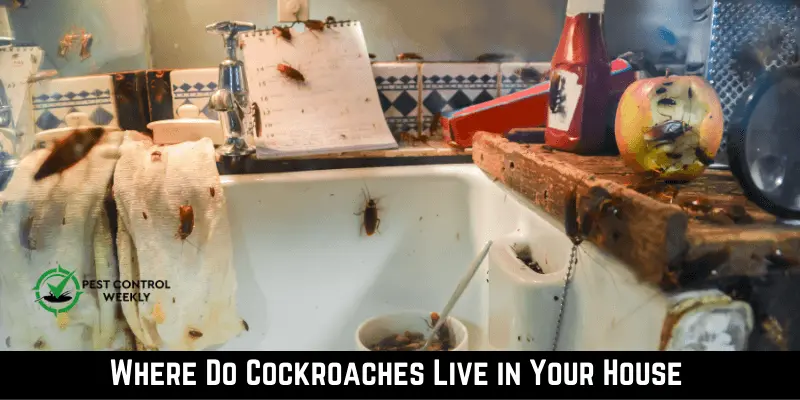Cockroaches can live anywhere in your house for food, water, and shelter. As they contaminate your food with deadly bacteria, no one wants to see them in their house. To keep away roaches from your house, you must know the answer to this question; where do cockroaches live in your house?
As cockroaches enjoy dark places, water, and wetness, you can discover them in every area of your house. They are located in your home’s upstairs and downstairs. Upstairs, cockroaches love to reside in your kitchen, bedroom, and living room, while downstairs, they prefer wet areas.
Are cockroaches in your home, but you’re unable to locate them? Read the below recommendations to identify their areas and ways of controlling them.
How Do Cockroaches Enter Your House?
Cockroaches are very clever and messy creatures. Once they make their way into your home, they start contaminating everything, especially in warm and damp areas of your house. To eliminate them from your home or property, you must know the below-mentioned entry points of roaches.
- They enter your house through small holes and cracks in walls.
- Sometimes, cockroaches make their way to your home by entering your suitcase or backpack.
- Open doors and windows are trouble-free pathways for roaches.
- Newspaper and cardboards help cockroaches to move here and there and to communicate themselves.
- If you have a pet in your home, then cockroaches simply enter your home by attacking your pet food.
- Moreover, they also move from one place to another through drainage pipes and holes.
What Attracts Cockroaches in Your Home?
Cockroaches attract to any place that meets their primary requirement of food, water, and shelter. If roaches find such a location, they will make it their permanent home and won’t leave until interpreted with controlling methods. Here are some things that attract cockroaches most in your home:
- If you have dirty or unwashed dishes in your sink, cockroaches are more likely to attack them to get their food.
- Uncovered trash cans provide a rich supply of food to cockroaches. So, you may see them near your garbage bins.
- If you have standing water in your home, you may notice the presence of cockroaches there because it fulfills their thirst.
- Cracks and gaps in your walls are other great allurements for roaches to build nests.
- Additionally, having pet food in your home may appeal to cockroaches. So, always store pet food in an air-tight jar to keep them away.
Common Cockroach Species That Live in Your House
To know where cockroaches live in your house, you must know the type of cockroaches. Below are some common species of cockroaches that live in your home.
German Cockroach
According to the Biological Invasions Journal, German cockroaches are the most prevalent and frequent in urban settings. They are difficult to find due to their small size of less than 1 inch. These roaches can enter your house through small cracks or gaps in your walls.
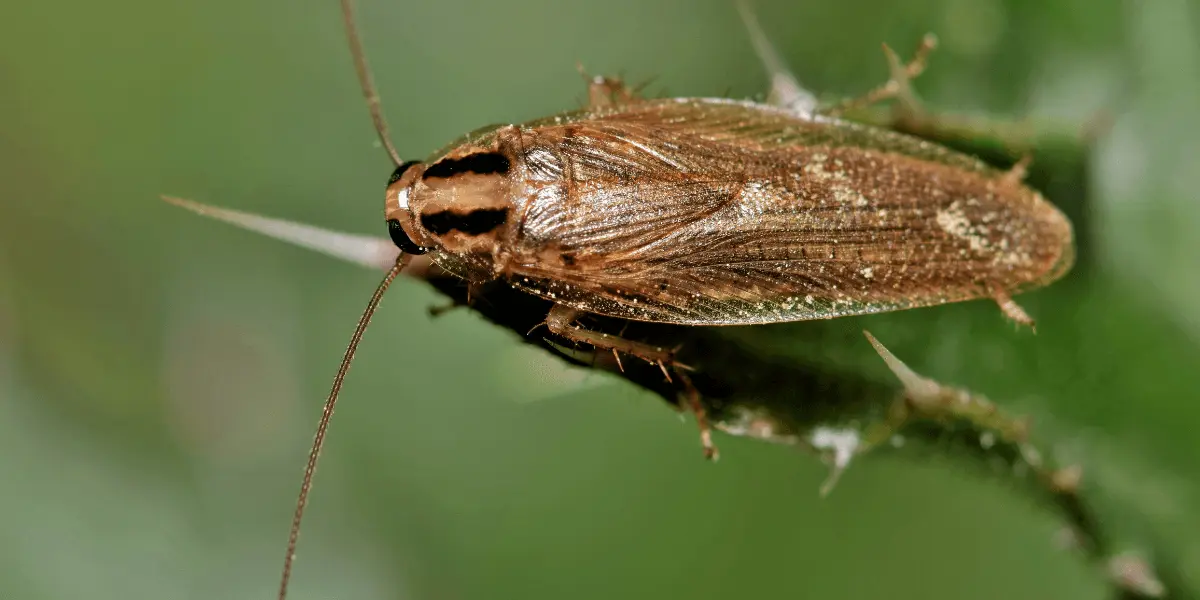
Moreover, german roaches prefer to live in warm and humid indoor areas like your kitchen, toilets, and basements. However, you can find them anywhere in your house, near the food and water supply.
American Cockroach
American cockroaches can live both inside and outside areas. However, they prefer to live in warm and humid outdoor places and are present in drain pipes, garbage cans, trees, and heaps of wood. They used to fly in search of food. Additionally, they grow fast and multiply quickly to increase their numbers.
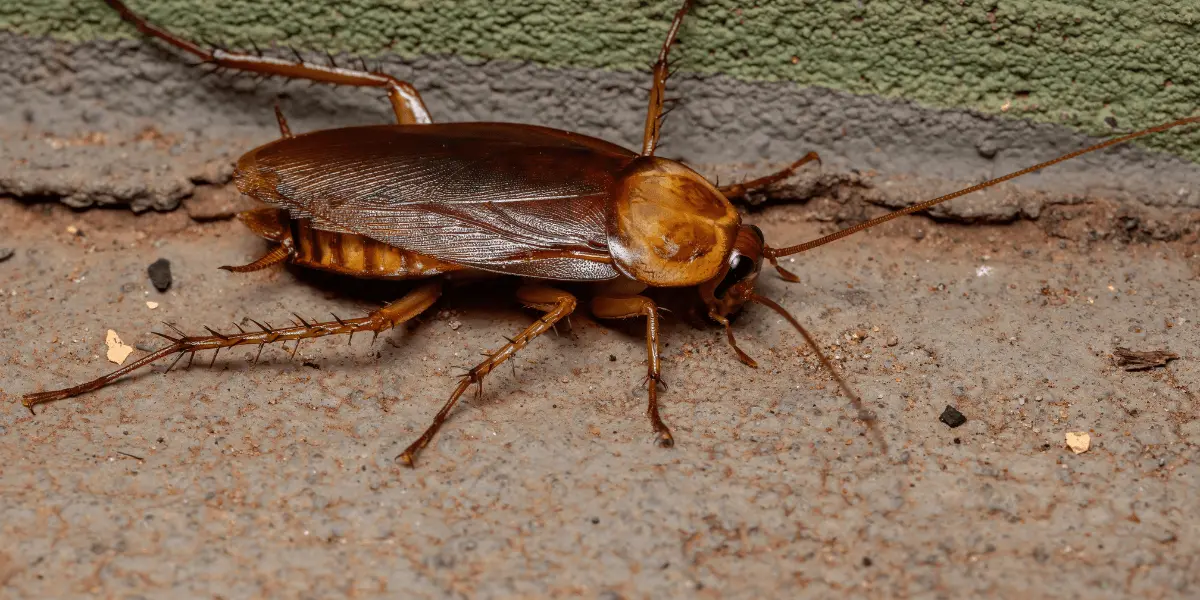
Although they love to reside in outdoor regions, you can find them inside your kitchen, toilets, water ducts, electrical utensils, garage, and trash bins.
Brown-Banded Cockroach
Brown-banded cockroaches are similar to german cockroaches, but they have different habitats. They love to live in the hot and dry areas of your home, such as cabinets of the kitchen, electrical appliances, below the refrigerator, motors, and other electronic devices. Additionally, in temperatures under 30°C, an adult cockroach has a life span of 90-115 days.
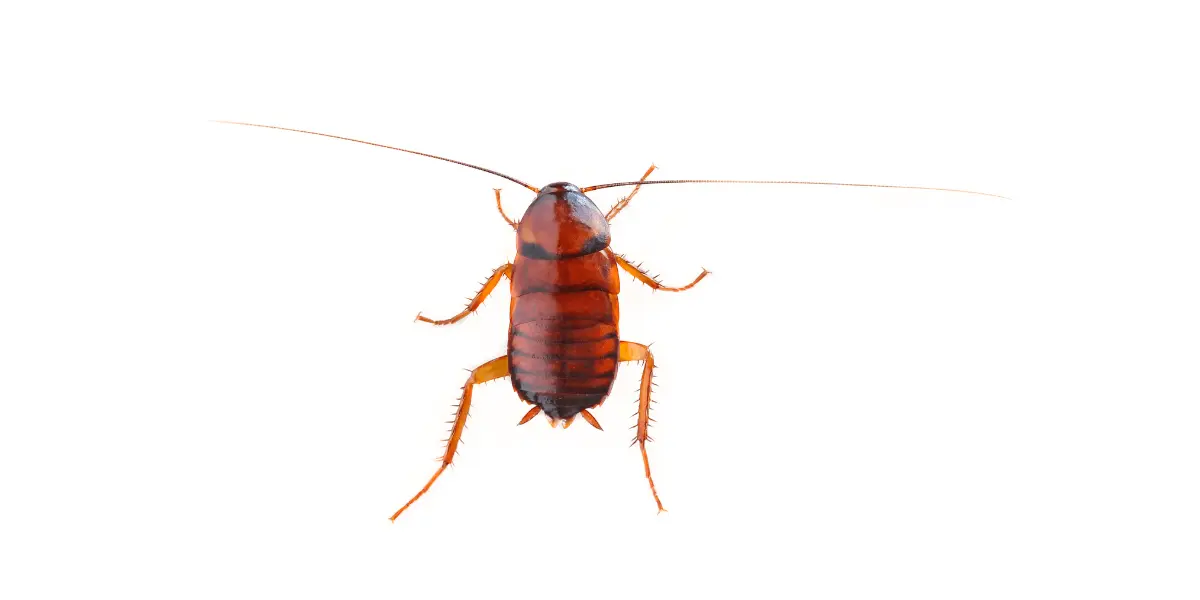
If the temperature is less than 30°C, you may have the chance of brown-banded cockroach infestation. Thus, exhibit preventive measures to stop their entrance into your home and buildings.
Oriental Cockroach
Oriental cockroaches are round, wingless, and one inch long. They are also deep brown or red in appearance. In certain lighting situations, they could seem black. Compared to other species, they are slower and less agile.
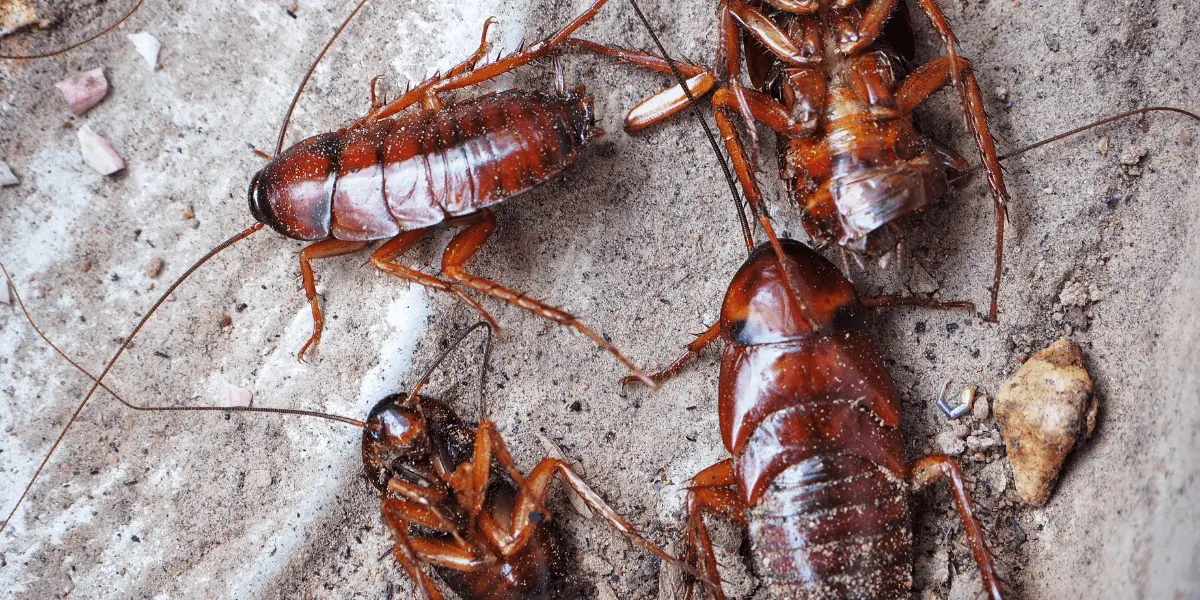
L
ike American cockroaches, they love to hide in warm places. However, they used to avoid the sun and seek out dark, moist areas like mulch pits, leaf heaps, and beneath rocks and stones. Moreover, they are fond of water. Thus in outdoor areas, you may find them near the water supply and moist places.
Asian Cockroach
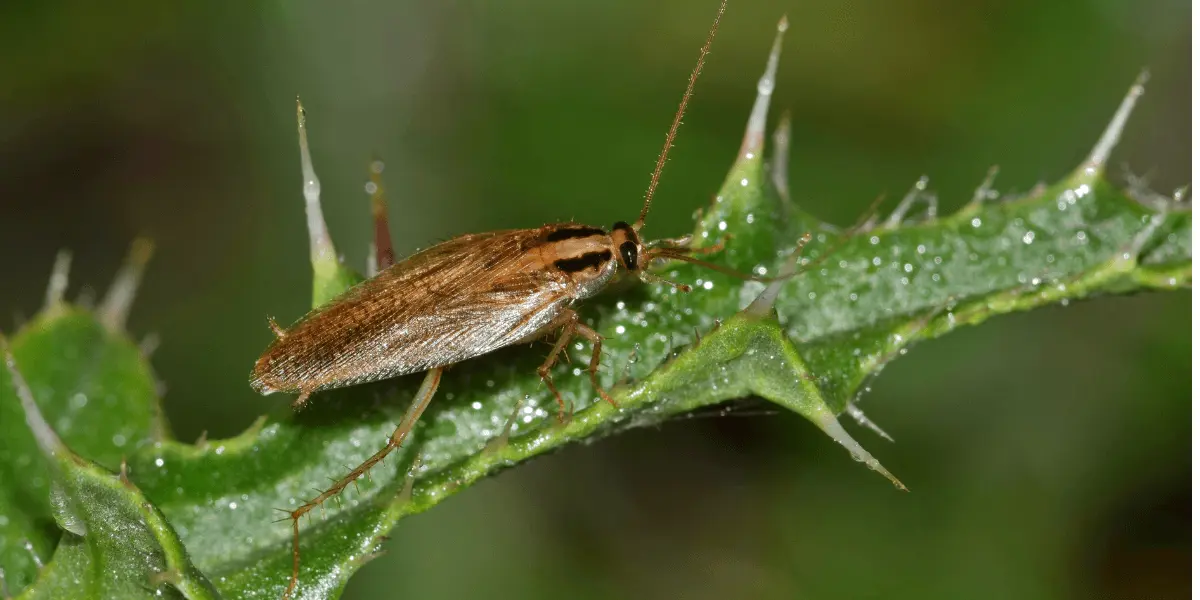
According to the Journal of Economic Entomology, Asian cockroaches are widespread throughout the Southeastern United States. They like to reside in outdoor areas like mulch, piles of wood, and crowded places. Moreover, you may also find them in your garden, under your trees, bushes, and shrubs.
Hissing Cockroach
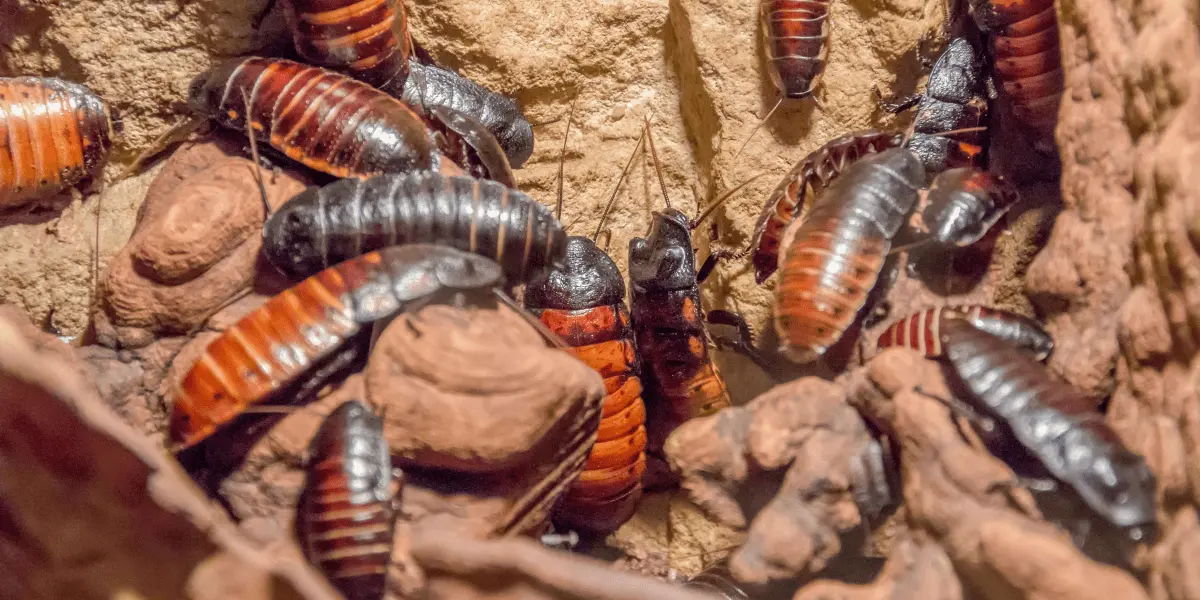
The hissing cockroach belongs to an African Island, Madagascar. On the corresponding island, woodlands are home to hissing cockroaches. They reside in decaying logs, on the forest floor covered in leaf litter, and close to riverbanks. Moreover, they are common pets of people in Africa.
Where Do Cockroaches Nest in Your Home?
Cockroaches are regarded as one of the most tenacious and consistent pests due to their ability to adapt to difficult circumstances. They live in places that have a good supply of food and water. Here are some loving places for cockroaches:
Kitchen Utensils
The kitchen is the favorite place for cockroaches because food, drink, and numerous hiding places are all easily accessible. Kitchen utensils like fridges, dishwashers, stoves, and ovens have a rich supply of food and water. Cockroaches enter your fridge through open doors, gaps in the lining, and food containers.
Moreover, dirty dishes left overnight draw roaches because the food caught in a drain. While stoves and ovens provide warmth to cockroaches, they used to live in your stoves to stay warm.
Cabinets
Cockroaches can live in your kitchen cabinets because of the presence of leftover food there. They have little trouble snooping into cabinets to eat any food remnants left over. To make your pantry and cabinets less inviting to creepy crawlies, attempt to clean them frequently. Additionally, stock foods like cereals, pasta, and pet food in airtight and well-sealed containers.
Bedrooms
The idea of roaches scurrying on you while you sleep or around the room is horrifying. Further, these pests can spread dangerous pathogens and cause asthma attacks and allergies. In your bedrooms, they live in the following places:
- Storage boxes in your room provide dark spots and a peaceful place for cockroaches to hide.
- Cockroaches also live in your closets, drawers, and wardrobes because of the warmth and darkness.
- As some clothes are edible, cockroaches love to hide between clothes for food.
- Moreover, they also love to hide beneath your mattress to get warmth and shelter.
Electric Appliances
Sometimes you may eat something while working on your laptop. It may leave food particles there, making it the best place for cockroaches to reside. Moreover, they also hide in power strips, TV, wiring of your house, microwave ovens, lamps, and sewing machine.
Electrical appliances are dark and are left stationary for a long duration. They also give heat. Because of this, they attract roaches if the rest of the house is cold. Cockroaches can damage your devices by laying eggs and shedding skin there.
Drain Pipes
Cockroaches can enter your home through drainage pipes and ducts. They may climb the metal and get inside your house. Drainage ducts and pipes are common entry points for cockroaches. Therefore, you should regularly inspect your bathroom drains and sinks.
As drain pipes are dark, moist, and have a collection of hair and toothpaste, they provide an ideal place for cockroaches to stay. These drains are more at risk if you have a single sink or a tub. Roaches can freely enter and exit sewers, consuming anything they find there.
Cracks in Walls
Cracks and gaps in homes and flats can serve as cockroach hiding places. During the day, they favor hiding in shadowy areas and can readily get through crevices in walls. If the walls are hollow, a severe cockroach infestation may establish.
Additionally, the damp pipes that run along the walls are another factor that draws cockroaches to them. Aside from hiding places, walls are means of transportation for cockroaches.
Photos and Mirrors
Photos and mirrors hanging on walls are another attraction for cockroaches to hide. Cockroaches conceal themselves on the backs of posters, framed artwork, and wall mirrors. Brown Banded cockroaches are more likely to hide behind pictures since they are less moisture-dependent than other species. It is especially true of pictures hanging higher up when the temperature is warmer.
Cardboard Boxes
Cockroaches are fond of cardboard boxes and cluttering areas. They can also be brought in from outside, particularly if you move and carry boxes in. Cardboards appeal to cockroaches for a specific reason.
As cockroaches secrete special chemicals to communicate with each other, paper absorbs this chemical and helps in their communication. That’s why cockroaches love to hide in cardboard boxes.
Attics & Ceilings
Your attics often get less attention than the rest of your house. Although you use attics regularly, you can’t maintain them. Cockroaches can enter your home from the attic if the weather is inadequate.
Furthermore, many cockroaches enjoy resting on ceilings in dark spaces. The ceilings of your roof are the best palace for cockroaches to hide, especially if they are moist. If you see cockroaches in your ceilings, there are chances of cracks in your walls.
Storage Rooms
Cockroaches don’t like any interference during the daytime. It implies that if you have a space in your home, such as a storage room, that is rarely used and contains several items, you’ve created the ideal hiding place for roaches. Organize and clean your storage rooms and keep stuff in plastic rather than cardboard boxes to decrease the possibility of cockroach breeding.
Under Furniture
Furniture is one of the most disgusting places for cockroaches to hide. Cockroaches love to hide under furniture, especially if it’s close to a source of food and water, like the kitchen. Egg casings tucked away in mattresses, heaps of bedding or mounds of clothing are indications of a cockroach infestation. To prevent this, try to repair any torn cushions and sofas immediately.
Where Do Roaches Go During the Day?
As cockroaches are nocturnal pests and love the dark, they hide when exposed to light. They generally hide in your home’s shadows and moist spaces throughout the day. If you notice any cockroaches crawling around, you probably have dozens of them hidden somewhere.
Cockroaches don’t like the light, so they hide during the day in dark locations like the backs of stoves and refrigerators, under sinks or other fixtures, next to pipes, within switchboards, and behind wall paneling or doorjambs. Above all, their hiding places are practically limitless as long as they are dark and typically uninhabited.
How Do You Find Where Cockroaches Are Hiding?
To find the cockroach hiding places, you should first find the source of food and water because cockroaches are always searching for their livelihood. So, you should begin your inspection from your kitchen and bathrooms since there is plenty of food and water.
You should check all your cabinets, storage containers, sink, and stove in the kitchen. After inspection, place some sticky cockroach traps in the kitchen to lure them out of their hiding places.
While in bathrooms, inspect the sink or bathtub pipe as well as all drain pipes for cracks and holes. If you find signs of cockroach presence, like skin droppings or eggs, place some bait traps to get them out of their places.
How to Get Cockroaches Out of Their Hiding Places?
Cockroaches are highly irritating and deadly pests. They not only create a nuisance but also spread harmful diseases to humans by contaminating your food. Even though getting rid of roaches is a burdensome task, you can control them by below tips:
- First, you should cut off their food supply by storing food in a metal container and removing leftover food from your kitchen shelves.
- Remove their favorite hiding places like cardboard, newspapers, and empty boxes.
- Block all the entry points, such as cracks or holes in your walls, by repairing or replacing them.
- As cockroaches like moist areas, remove all the stagnated water and don’t let water stand in your home.
- You can kill roaches by using a plant-based insecticidal spray.
- Moreover, you can use a bait trap to catch cockroaches.
Where Do Cockroaches Live Outside Your Home?
Cockroaches frequently prefer living outdoors to indoors. No matter the type, cockroaches prefer warm environments with the availability of food, water, and shelter. Below are some favorite outdoor spots of cockroaches.
Trashcans
Trash cans contain roaches’ favorite food like rotten fruits & vegetables, meat particles, and sugary and starch food. To make their way to food, cockroaches chew plastic garbage bin bags with their strong teeth. Accordingly, cockroaches and their nymphs reproduce in trash cans.
Sewerage Pipes
Cockroaches, particularly Oriental and American roaches, are common underneath sewage and drainage systems. Drain and sewerage pipes provide a lot of wetness, and cockroaches may live there without worrying about being eaten by predators. Moreover, these pipes also protect cockroaches from the worst weather conditions.
These sewerage pipes can also give access to indoor areas. That’s why you may notice them in your bathrooms.
Gardens
As cockroaches love to live in shrubs and flowerbeds, you may find them in your garden and yards outside your home. Instead of being drawn to flowers and plants, they draw to the soil’s warmth, humidity, and shelter. However, certain roach species consume decomposing plants and leaves, so shrubs and flowerbeds can occasionally offer cockroaches a crucial source of food and water, allowing them to thrive.
Piles of Wood
Cockroaches can dwell comfortably in woodpiles. The wet, gloomy environments found amongst leaves, wood, and mulch are particularly appealing to oriental cockroaches. However, American roaches are also fond of woods. Furthermore, cockroaches may enter your home in search of comfort if you keep wood and leaves close to the exterior of your house.
Trees
Cockroaches love to reside on decaying tree trunks. In addition to being warm and moist, the rotting wood of a tree also gives them the food and nutrition they require. They live near trees to eat rotten fruits & vegetables, shrubs, and flowerbeds. Even though you may wish to keep cockroaches out of your trees, they can aid in the decomposition process.
Wrapping Up
It is unpleasant to have cockroaches in or around your home. You should protect yourself and your family from them since they spread infections and diseases. Keeping roaches at bay is a challenging task.
You can discover these bothersome pests in your kitchen, bathrooms, electrical devices, and furniture. Therefore, you must ascertain their entry method to stop cockroaches from entering your house.
Above all, remember that if you discover any indications of a cockroach infestation in your home, take immediate action. So by having pest management knowledge, you can detect cockroaches in your home and make their visit the final one.
References
Tang, Q., Bourguignon, T., Willenmse, L. et al. Global spread of the German cockroach, Blattella germanica. Biol Invasions 21, 693–707 (2019).
Yvonne K. Matos, Coby Schal, Laboratory and Field Evaluation of Zyrox Fly Granular Bait Against Asian and German Cockroaches (Dictyoptera: Blattellidae), Journal of Economic Entomology, Volume 109, Issue 4, August 2016, Pages 1807–1812,
